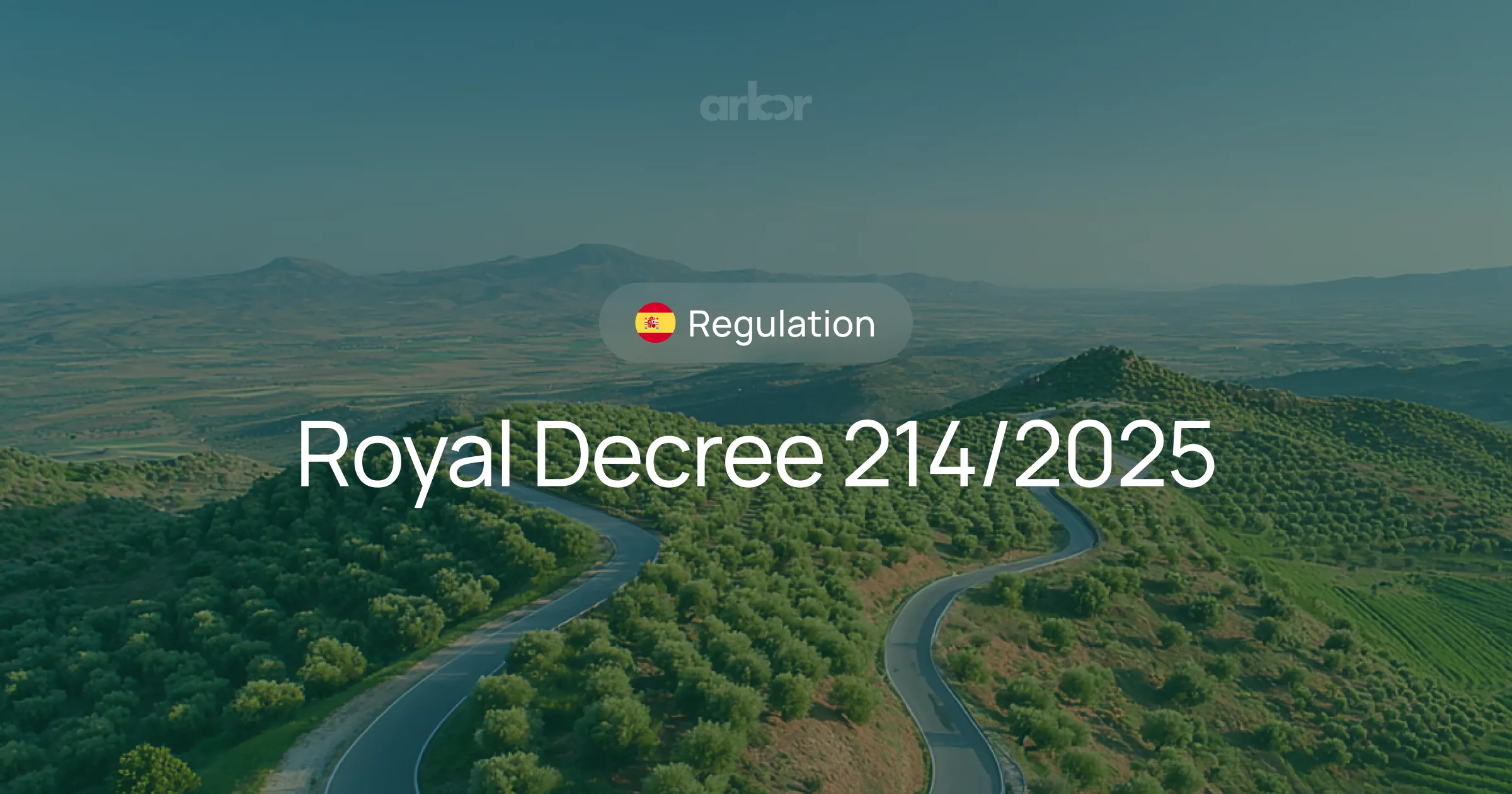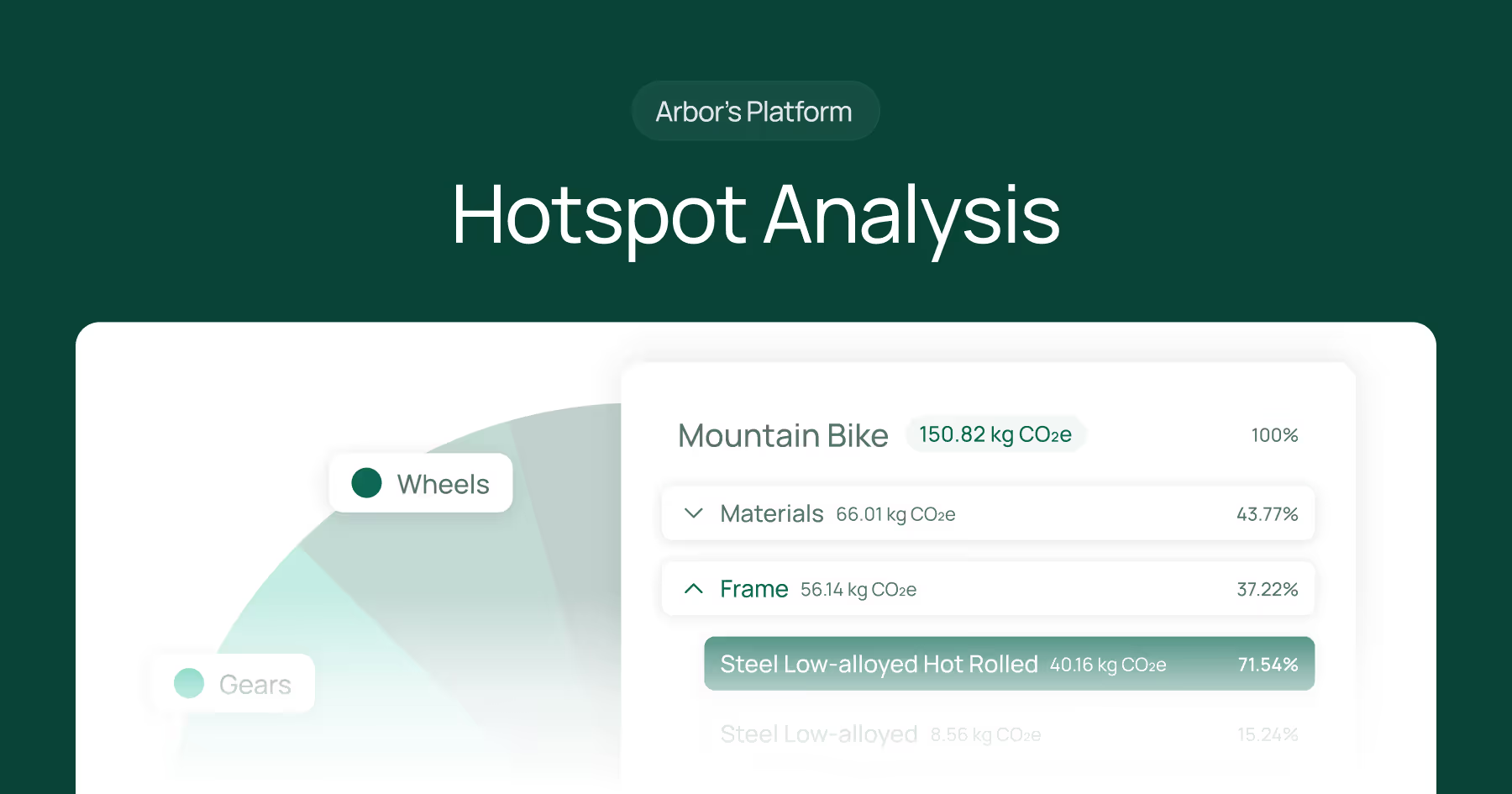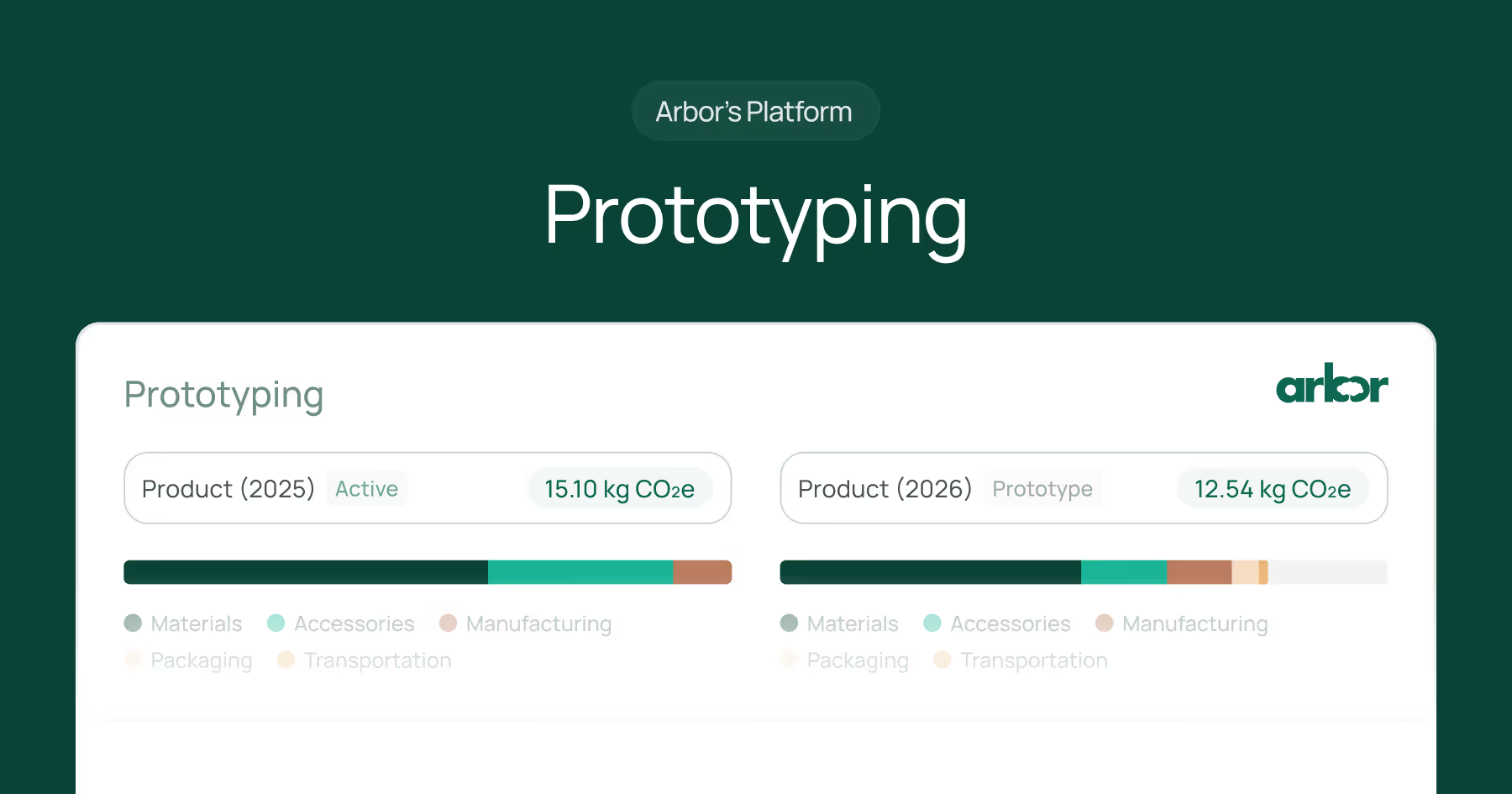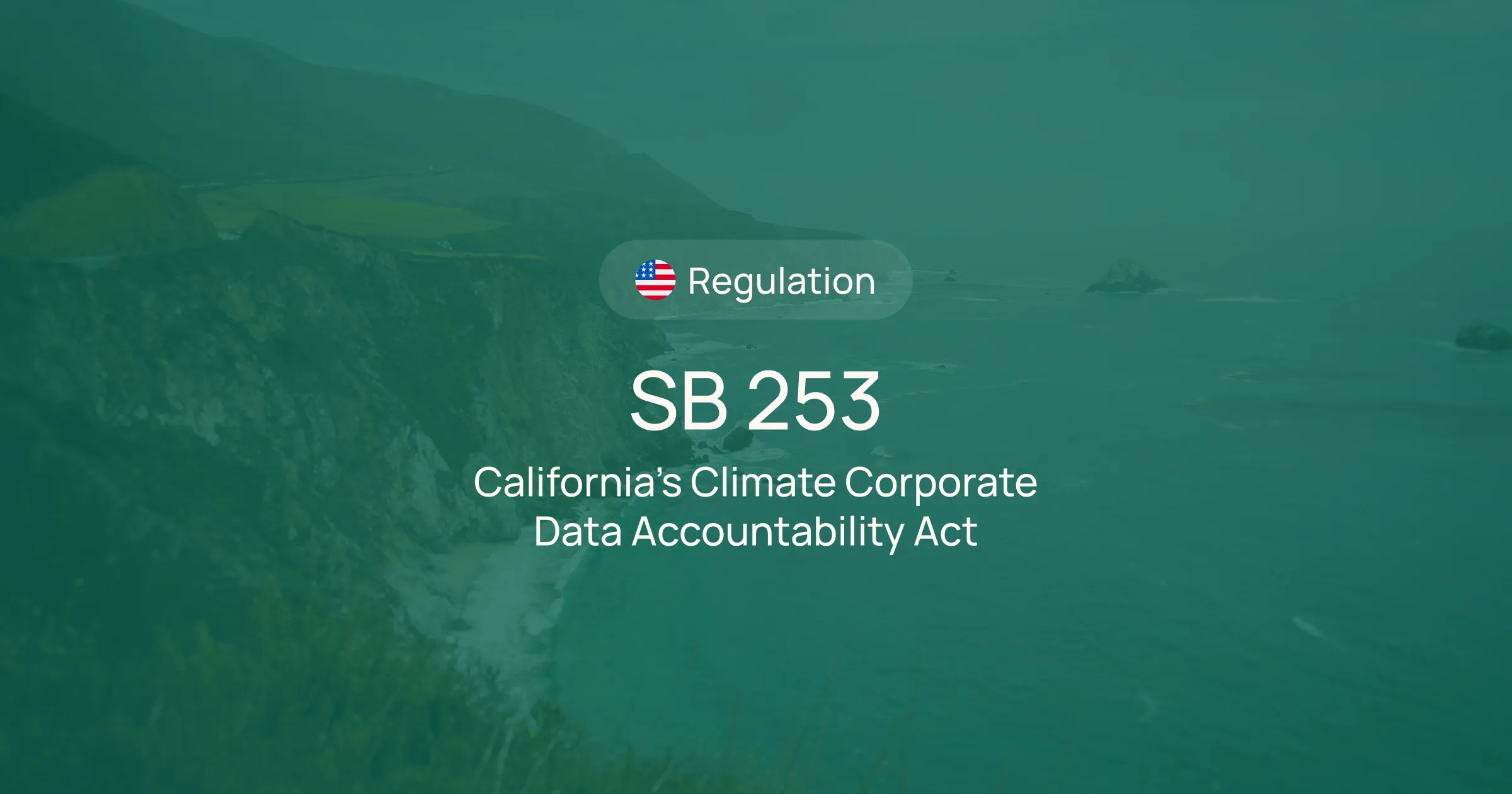- SBTi Version 2.0 Update: The March 2025 update introduces new guidelines for the Corporate Net-Zero Standard, promoting clearer commitments and enhanced processes.
- Framework Enhancements: Includes major revisions such as more robust commitment processes, refined target-setting criteria, and updated validation models to ensure compliance with the Paris Agreement's 1.5°C goal.
- SBTi Benefits: Aligning with SBTi drives innovation, regulatory preparedness, enhanced brand reputation, and investor confidence through credible, ambitious climate action.
- Arbor helps businesses meet SBTi requirements by providing automated carbon measurements, clear data analytics, and reliable reporting tools to foster efficient carbon management.
- Impact on Businesses: The initiative supports companies in setting science-based emissions reduction targets, improving both their sustainability efforts and competitive advantage.
The Science-Based Targets Initiative (SBTi) provides companies with a critical framework for reducing greenhouse gas emissions in line with the Paris Agreement's goals to limit global warming to 1.5°C. This initiative, a collaboration between the Carbon Disclosure Project (CDP), the United Nations Global Compact (UNGC), the World Resources Institute (WRI), and the World Wide Fund for Nature (WWF), has recently received significant updates that underscore its evolving role in corporate climate action.
Recently, in March 2025, the Corporate Net-Zero Standard Version 2.0 Public Consultation introduced enhanced guidelines, boosting commitments and clarifying processes for businesses aiming to achieve net-zero emissions.
Origins and Purpose of the SBTi
Launched in 2015, the SBTi emerged as a timely response to the urgent need for corporate climate responsibility preceding the Paris Agreement.
The initiative's primary objectives are to mobilize corporate action by setting ambitious, science-based emissions reduction targets, demonstrate the benefits of such targets for a competitive advantage, and provide standardized guidance for setting credible climate goals.
Founding Organizations' Roles
The roles of the founding organizations are integral to the SBTi:
- CDP: Utilizes its global environmental disclosure platform to strengthen SBTi's monitoring and reporting processes.
- UNGC: Encourages businesses to adopt sustainable, socially responsible policies, aligning their operations with global sustainability goals.
- WRI: Offers rigorous research and analysis, aiding the SBTi in developing robust methodologies and target-setting criteria.
- WWF: Leverages its expertise in conservation to promote the initiative and mobilize corporate actions against climate change.
How the SBTi Works: Updated Framework
The Science-Based Targets Initiative outlines a methodical approach for companies to set, validate, and achieve emissions reduction targets. Recent developments in March 2025 have refined this process, emphasizing clearer guidelines and ambitions.
Step-by-Step Approach
1. Commitment
Companies initiate the process by making a public commitment to set science-based targets and align with the Science Based Targets Initiative (SBTi) framework. This signals their climate ambition to both internal and external stakeholders.
Notably, the recent Corporate Net-Zero Standard (CNZS) Version 2.0 proposes replacing the current commitment letter with a more robust commitment process. This updated process requires companies to publicly state their intentions to achieve net-zero emissions by no later than 2050 and to set science-based targets aligned with this ambition within 12 months for Category A (large and medium-sized companies operating in higher-income geographies) companies and 24 months for Category B (small and medium-sized companies operating in
lower-income geographies) companies.
These proposals aim to align with emerging best practices and require companies to more clearly and uniformly demonstrate their intentions and plans to back up their net-zero targets. Upon completion of an "Entry Check" under Version 2.0, companies can make certain claims about their commitment.
2. Target Development
Companies then develop their emissions reduction targets based on the SBTi's updated criteria and methodologies. This crucial step involves a thorough analysis of their greenhouse gas (GHG) emissions across all scopes—Scope 1 (direct emissions), Scope 2 (indirect emissions from purchased energy), and Scope 3 (all other indirect emissions in the value chain).
The CNZS Version 2.0 emphasizes aligning targets with a 1.5°C warming scenario. It also introduces changes to the target-setting process to make it more effective, including a more nuanced benchmarking approach, considerations for target ambition, composition, and timeframe, and specific guidance on addressing Scope 1, 2, and 3 emissions as well as residual emissions.
Version 2.0 places a greater emphasis on Scope 3 emissions, particularly for Category A companies, moving away from a fixed percentage coverage approach to prioritizing the most relevant emission-intensive activities in their value chain. Companies may set absolute targets, intensity targets, or alignment targets, depending on their context. They must select from methodologies approved by the SBTi.
Category A companies are required to set long-term targets across scopes 1 and 2, while long-term scope 3 targets are currently under consultation. Category A companies are also required to set Near-term targets across all scopes, while category B companies only need to set them for scopes 1 and 2. Category B companies can also continue to set near-term targets only.
Near-term targets” are the emissions reduction goals companies set to achieve within 5 to 10 years from the target submission date. In contrast, long-term targets are the net‑zero goals that require companies to reduce emissions by about 90% (or more) by 2050.
3. Submission
Once the targets are developed, businesses submit their proposed targets to the SBTi for validation. This is a formal step in the process to ensure external review and credibility. Information about target submission can now be found on the new SBTi Services website.
4. Validation
The SBTi's expert team rigorously evaluates the submitted targets to ensure they align with the latest climate science and meet the SBTi's criteria. This step is critical as it ensures that the company's reduction plans are ambitious yet achievable and consistent with global climate goals. The new validation model in CNZS Version 2.0 extends the SBTi’s focus to include target implementation and progress assessment.
5. Announcement
Upon successful validation, the SBTi approves and publicly publishes the company's targets on their Target Dashboard. This public announcement signals the company's credible commitment to science-based climate action and enhances transparency.
6. Disclosure and Monitoring
Following validation, companies are expected to disclose their emissions and progress towards their targets on an annual basis, fostering transparency and accountability. The upcoming changes in the CNZS Version 2.0 further enhance this process by requiring companies to assess and communicate progress at the end of their target period and set new targets that account for previous performance. This includes a greater emphasis on credible progress reporting and a new validation model that monitors and recognizes progress. Companies will also need to review and update their targets regularly
Scope 1, 2, and 3 Emissions: Refresher
- Scope 1: Direct emissions from owned sources, including fuel combustion, process emissions, and fugitive emissions.
- Scope 2: Indirect emissions from purchased energy like electricity and heating.
- Scope 3: The most comprehensive scope, encompassing all other indirect emissions in the value chain, from raw material extraction to end-of-life product disposal. These emissions often exceed the others in complexity and volume.
Recent Updates (March 2025)
Target Dashboard Enhancements
The SBTi introduced unique identifiers for businesses and targets, snake case naming conventions for data fields, and a "validation route" field. These changes aim to improve data processing compatibility and to track progress more efficiently.
Corporate Net-Zero Standard and Near-Term Criteria Revision
Incorporating feedback, these revisions enhance the clarity and usability of core SBTi documents, aligning them more closely with the latest climate science.
- Net-Zero Standard Revision: Enhanced progress reporting mechanisms and strengthened validation processes aim to foster transparency in target implementation.
- Near-Term Criteria: Elevates target alignment to a 1.5°C warming scenario, raising ambition for nearer-term goals.
Financial Institutions Criteria Enhancements
The SBTi has increased expectations for financial institutions to align near-term targets with 1.5°C scenarios. New guidelines address their roles in fossil fuel financing, encouraging clear emission reduction strategies.
Land Sector and Forest Guidance (FLAG)
Recognizing the significance of land-use change in global emissions, the SBTi rolled out specific FLAG guidance. Companies with substantial land-related emissions must set separate targets for this aspect, accounting for emissions and removals associated with land-use changes and deforestation.
Key Changes Under CNZS Version 2.0
The latest draft of the Corporate Net-Zero Standard introduces vital adjustments:
- Commitment Process: Enhanced commitment documentation replacing the previous letter format.
- Base Year Performance: Companies now use a more detailed framework for assessing target-setting baselines, amplifying data quality and remediation.
- Comprehensive Target Setting: Incorporates a refined benchmarking approach, ensuring targets cover residual emissions clearly.
- Assessing and Communicating Progress: A novel validation model expands the focus to include target implementation, enhancing accountability.
Benefits of the Science-Based Targets
Aligning with the SBTi offers numerous advantages beyond reputational boosts:
- Driving Innovation: Encourages creative solutions for emission reductions, potentially leading to new sustainable products and practices.
- Regulatory Preparedness: Companies with science-based targets are better equipped for emerging regulations related to climate goals.
- Investor Confidence: Demonstrating credible climate targets enhances investor relations and can attract additional investments.
- Profitability and Efficiency: Initiatives driven by the SBTi often lead to improved energy efficiency, reducing costs and boosting profitability.
- Brand Reputation: Consumers favour companies taking significant steps toward sustainability, which can enhance customer retention and loyalty.
How Arbor can help with Science Based Targets
At Arbor, we help businesses measure their emissions accurately; the SBTi updates reinforce our mission of enabling efficient and precise carbon accounting. Here's how Arbor supports you:
- Automated Carbon Accounting: Arbor provides automated tools to accurately measure greenhouse gas emissions, aligning with SBTi's stringent reporting requirements, reducing manual intervention, and saving precious time.
- Data-Driven Insights: Gain clear insights into carbon hotspots with Arbor’s precise data analytics, helping you focus on strategic emission reduction actions that effectively meet SBTi standards.
- Trusted Accuracy: Arbor’s platform helps collect important supplier-specific data, ensuring you receive accurate and compliant carbon footprint calculations for reliable SBTi reporting and net-zero action.
Summary
The Science-Based Targets Initiative remains a pivotal framework for companies committed to ambitious climate action. With the recent updates and guidelines, businesses can set more precise, science-aligned targets, contributing to a sustainable future and operating advantageously within the global climate framework.
Demonstrating how businesses can drive meaningful progress and systemic change, SBTi propels the transition to a low-carbon economy, aligning with Arbor’s mission to simplify and optimize carbon accounting for enterprises worldwide.
Measure your emissions with Arbor
Measure your carbon emissions with Arbor
Simple, easy carbon accounting.



_%20_%20Carbon%20101.avif)

.webp)











%20Arbor.avif)





%20Arbor.avif)


.avif)






%20Arbor%20Canada.avif)

.avif)
%20Arbor.avif)
.avif)






_.avif)
.avif)
%20Arbor.avif)




%20Software%20and%20Tools.avif)





.avif)
.avif)




%20EU%20Regulation.avif)












.avif)


%20Arbor.avif)
















.avif)

.avif)
.avif)



.avif)








